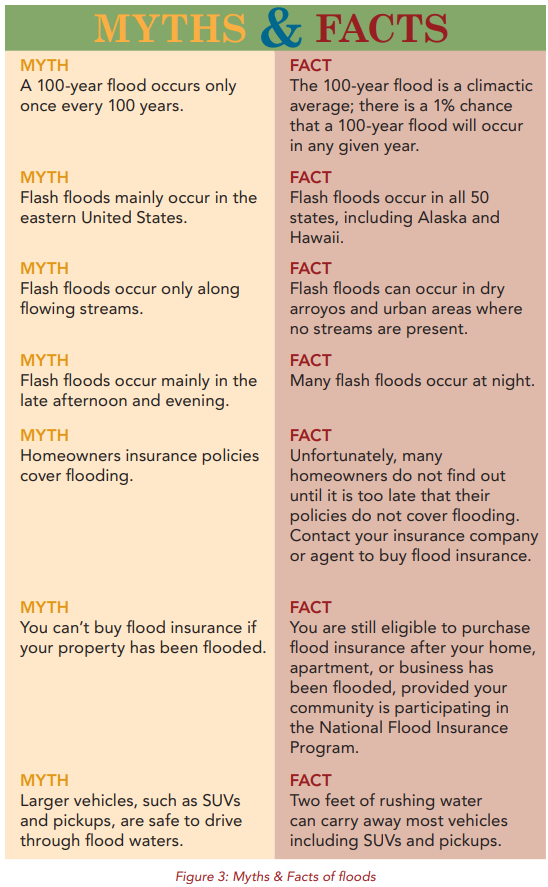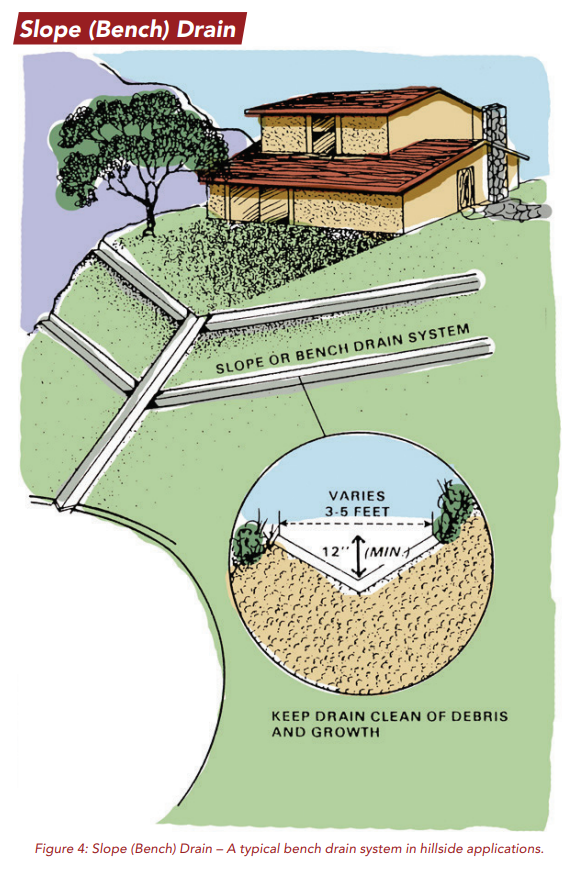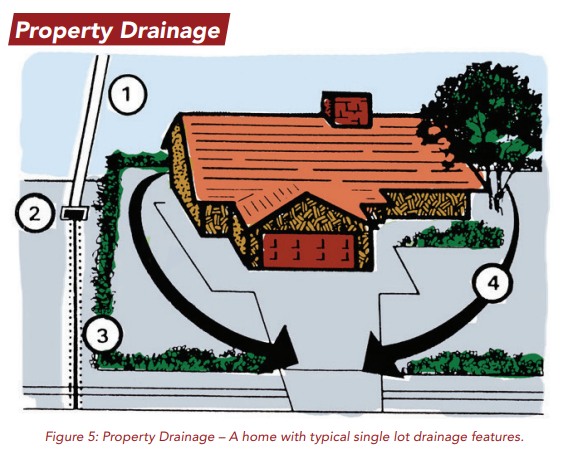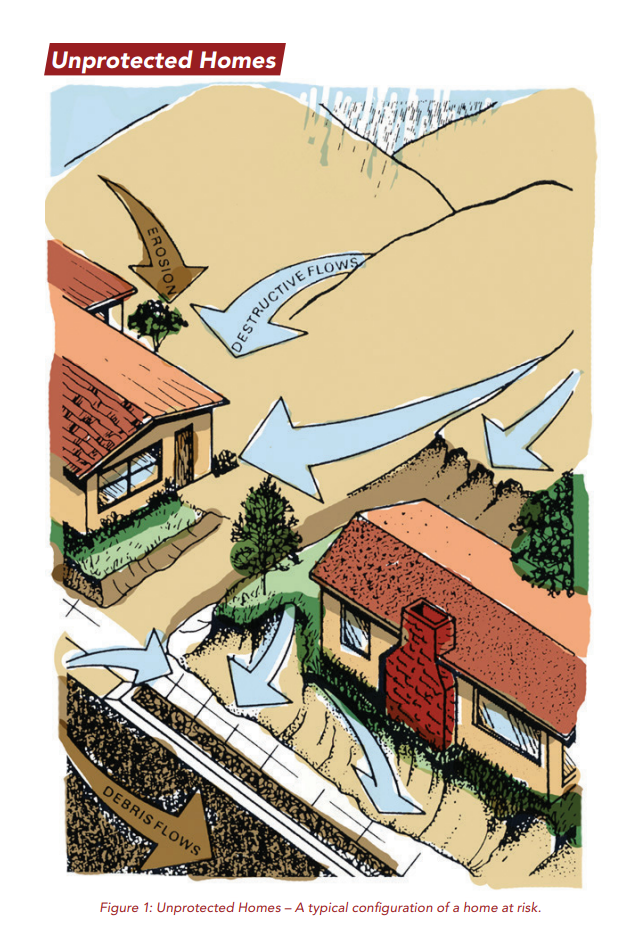SECTIONS
- Evaluating Your Property & Property Flood Proofing: Drainage Improvements
- Preparing Your Property for Debris Flows
- Flood-Proofing Structures
- Flood Protection and Erosion Control in Newly Developed Areas
- Erosion Control in Burned Area
- General Preparation
- Home Owner’s Guide Flood Insurance
- When a Flood Comes
- After a Flood: Recovery Tips
- Information Sources
- Important Contacts
- Evaluating Your Property & Property Flood Proofing: Drainage Improvements
- Preparing Your Property for Debris Flows
- Flood-Proofing Structures
- Flood Protection and Erosion Control in Newly Developed Areas
- Erosion Control in Burned Area
- General Preparation
- Home Owner’s Guide Flood Insurance
- When a Flood Comes
- After a Flood: Recovery Tips
- Information Sources
- Important Contacts
Evaluating Your Property
Know your property: identify changes in slope and grade that influence where water and debris flow and collect. Know the over- land escape routes for water/debris, and plan diversions accordingly. Consider low spots and high flow areas when planning for structure and property protection. Also consider escape routes for water and be sure that your efforts to protect your own property do not result in diverting water to a neighbor’s property where it could cause damage there. See Figures 1 and 2 for drawings depicting protected and unprotected properties.
Property Flood Proofing: Drainage Improvements
There are two types of drainage to consider; surface and subsurface. Surface drainage refers to channels, ditches, culverts, walls and other conveyance or diversion methods that move surface water or debris off your property. Sub-surface drainage includes pipes, French drains and sumps which move water under the surface of land. Sub-surface drain- age can be more difficult and expensive to construct but can also result in lower property damage due to surface flooding and soil erosion, or flooded structures. Myths and facts of floods are shown in Figure 3.
Carefully evaluate which type of drainage is needed for your property. When designing a drainage system, especially if you are located in a flood prone area, consider consulting a professional such as a civil or geotechnical engineer or a landscape architect.



PROPERTY DRAINAGE
➀ Paved terrace drains may extend over several lots, but it is each owner’s responsibility to maintain that portion which is on their property. Keep drainage clean.
➁ Grates and basins should be kept free of silt and debris. Make periodic checks to be sure the grate and outlet pipes are not clogged.
➂&➃ Earth berms prevent water from flowing over slopes. It is important that these berms be maintained. Side swales direct water around the house. Keep flow line at least 24 inches from the building wall.
In hillside areas, poorly maintained drainage devices (including slope or bench drains) are the source of many flooding problems. Maintenance of these drains is the responsibility of the homeowner with few exceptions. Keep these drains clear of debris and overgrowth. Blocking may cause undermining and structural failure of the drains or erosion of the hillside. See Figure 4.
A primary design consideration is the location of overland escape routes for water on your property leading to streets or gutters. It is important that your drainage system not overload those escape routes.
Once you have designed and installed a drainage system, be sure that you maintain it and check it periodically during the rainy season to identify and correct problem areas such as leaves clogging a drain or sump.
See Figures 4 and 5 for drawings illustrating drainage improvements.



